|
In a silicon-on-substrate optical system, the filter achieves a choice of a range of wavelengths and is a typical passive device. There are many types of components that can be used as filters, such as microring resonator structures, sidewall grating structures, Mach-Zehnder interference structures, and the like. The EPIC group has the basis for designing and fabricating a variety of silicon-based filters. Taking cascaded microrings as an example, we designed and fabricated a cell device with a bandwidth of 1.8 nm and an extinction ratio of 32 dB.
|
Micro Ring Resonator(MRR)
|
|
The filtering mechanism of the microring resonator is: the microring has selective resonance effect on a series of comb-like frequencies, as shown in Fig. 1 is a typical micro-ring demultiplexing device. By setting the radius of the microring, inputting the waveguide and the parameters such as the coupling pitch of the microrings, we can make each microring resonate to different wavelengths. The optical signal containing multiple wavelengths is input from the straight waveguide, and when passing through the microring, the optical signal of the resonant wavelength is coupled into the microring. The light wave resonates in the microring and the distance between the output waveguide and the microring can be set such that the resonant light wave is again coupled into the output waveguide. The figure shows the microscopic view of the microring filter and the spectrum obtained from the test.
This group has the ability to design and fabricate single and cascaded micro-rings, and can design and fabricate micro-ring structures with adjustable filter wavelengths. Figure 1 shows the microscopic view and test curve of the micro-loop upper and lower channel filter designed and fabricated. In terms of improving the micro-ring bandwidth, the EPIC group successfully produced a cascaded micro-ring structure with a peak half-width of 1.8 nm and an extinction ratio of 32 dB.
|
|
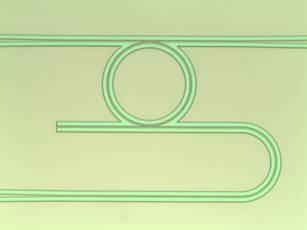 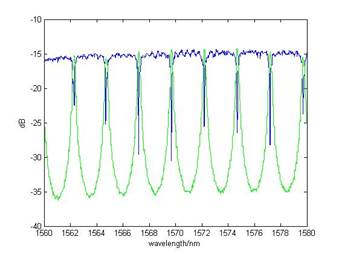
Figure 1 Single microring resonator and spectral curve
|
|
Side-wall grating
|
|
The sidewall grating utilizes periodic protrusions and depressions on the sides of the waveguide to form periodic Bragg reflections to achieve wavelength selection. The sidewall grating has a high extinction ratio and a large free spectral range to meet the requirements of wideband filtering. Figure 2 shows the sidewall grating elements of the EPIC group designed and fabricated via CMOS tape. The figure shows the scanning electron microscope view and the test curves for the different parameter components. The device has an FSR greater than 100 nm and an extinction ratio of more than 27 dB.
|
|
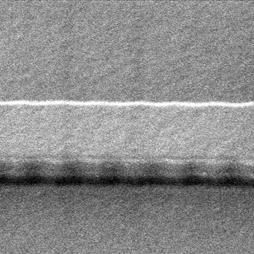 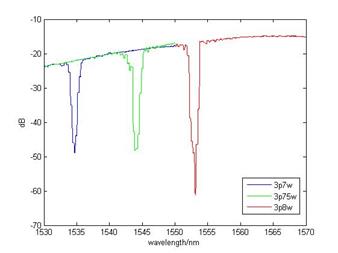
Figure 2 SEM view and test curve of sidewall grating
|
|
Mach-Zehnder Interferometer(MZI)
|
|
MZI consists of two 3dB splitting structures (such as multimode interference coupler) and two arm lengths. The principle of wavelength division is: light enters from the input waveguide of MZI, splits through 3dB coupler, and evenly enters both arms. By precisely designing the arm length difference, the filtering wavelength is at a position where the interference is extremely large. Multiple MZI structures are cascaded to ultimately select the desired filter wavelength.
As shown in Fig. 3, a 1-zoning 8-channel MZI cascade filter made by IBM's Yurii A. Vlasov et al. is a microscope view and a test curve. The test results show that the device has a good flat-top response, and the loss and crosstalk are 1.6dB, -18dB~-20dB, respectively [1].
|
|
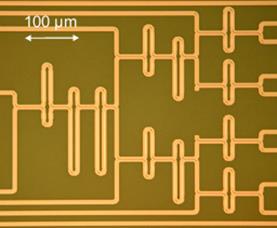 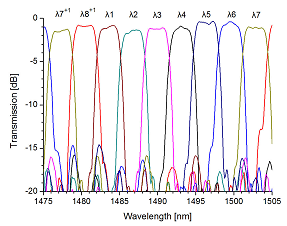
Figure 3 Microscope view and test curve of MZI cascade structure
|
|
Bibliography
|
|
[1] Folkert Horst, William M.J. Green, Solomon Assefa, Steven M. Shank, Yurii A. Vlasov, and Bert Jan Offrein, " Cascaded Mach-Zehnder wavelength filters in silicon photonics for low loss and flat pass-band WDM (de-)multiplexing," Opt. Express. 21(10), 11652–11658 (2013).
|
|

